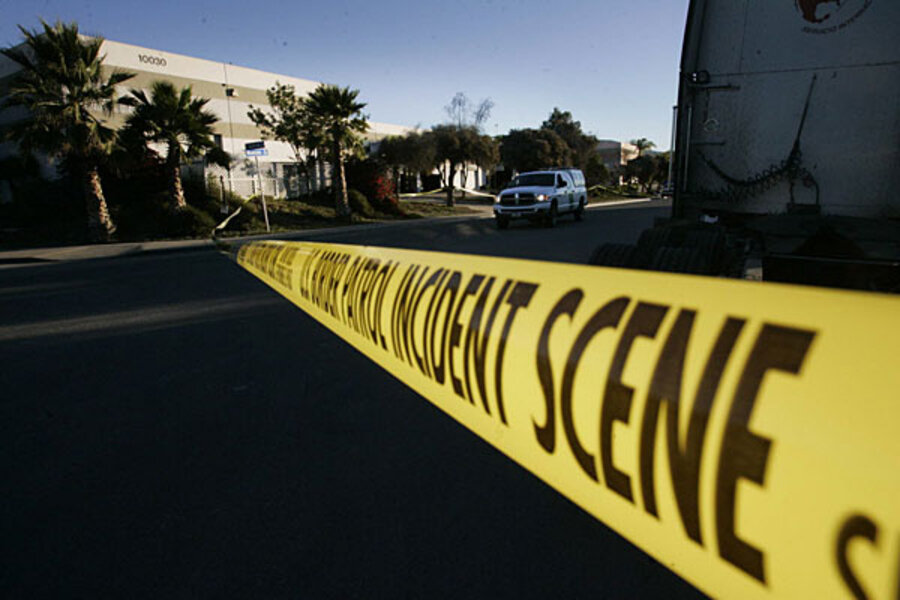Huge drug busts linked to tunnels, as border security tightens
Loading...
If you can't beat them, tunnel under them.
That seems to be one credo of Mexican drug smugglers employing prairie-dog methods to build sophisticated tunnel systems that allow them to carry tons of marijuana into the US.
The discovery over Thanksgiving of a half-mile-long drug tunnel from a house in Tijuana to two warehouses in San Diego's Otay Mesa community, marks the second such find in less than a month. A tunnel the length of six football fields was found Nov. 2, also from Tijuana into the San Diego area.
IN PICTURES: US-Mexico drug tunnel
Both tunnels, US authorities say, came complete with light-gauge rail lines and rail sleds powered by car batteries, to more quickly move bundles of pot as deep as 70 feet below the borderlands. Some tunnels – including the most recent ones found – show very sophisticated engineering, sporting ventilation, lighting, and even drainage systems.
US authorities, who unearthed the latest tunnel, believe both tunnels belong to the Sinaloa cartel in Mexico, headed by the most wanted cartel boss south of the border, Joaquin "El Chapo" Guzman. Both finds have registered as among some of the top marijuana hauls in US law enforcement history, with the Nov. 2 discovery yielding 20 tons of pot and authorities hinting Friday that as much or more may have been found on Thursday.
Traditionally, Mexican cartels have mainly used planes, boats, and human backpackers (and an occasional submarine) to ferry illiicit drugs to the US market. Crackdowns in Mexico have fueled a violent, four-year drug war there. That, plus a longer border fence and more robust US border patrols, may be leading cartels to increasingly focus their transportation routes on tunnels, authorities warn.
"The [tunnel-building] activity levels have been skyrocketing. It has to do with all the new border security," US Immigration and Customers Enforcement (ICE) agent Jose Garcia told the Arizona Republic in 2008.
US border authorities have located 113 cross-border tunnels so far, most going into California and Texas. Over the past two years, the number of tunnel finds by US authorities is up 62 percent. The majority of tunnels have been found since 2006, coinciding with stepped-up border enforcement and the building of hundreds of miles of new border fence.
Though the tunnels range from large concrete-reinforced passages to small hand-dug crawlways, most represent a significant investment by cartels in time and money, with some tunnels estimated to have cost millions of dollars to build.
"The tunnel is basically is the proverbial golden goose that can continue to lay golden eggs if it is completed," Tim Dunst of the San Diego Tunnel Task Force told a local Fox News affiliate, KSAZ, in Phoenix on Friday.
US investigators began focusing on tunnel networks in 2003, when San Diego, with the help of ICE, established first Tunnel Taskforce. Authorities use classified military-style technology to locate where tunnels may exist, but the difficult part for investigators is finding where they emerge.
In some cases, authorities have used bulldozers and backhoes to search for the subterranean transnational passageways. But the key to finding the tunnels has been intelligence gleaned from smaller busts that lead investigators to hidden holes in the ground that widen into well-built tunnels.





